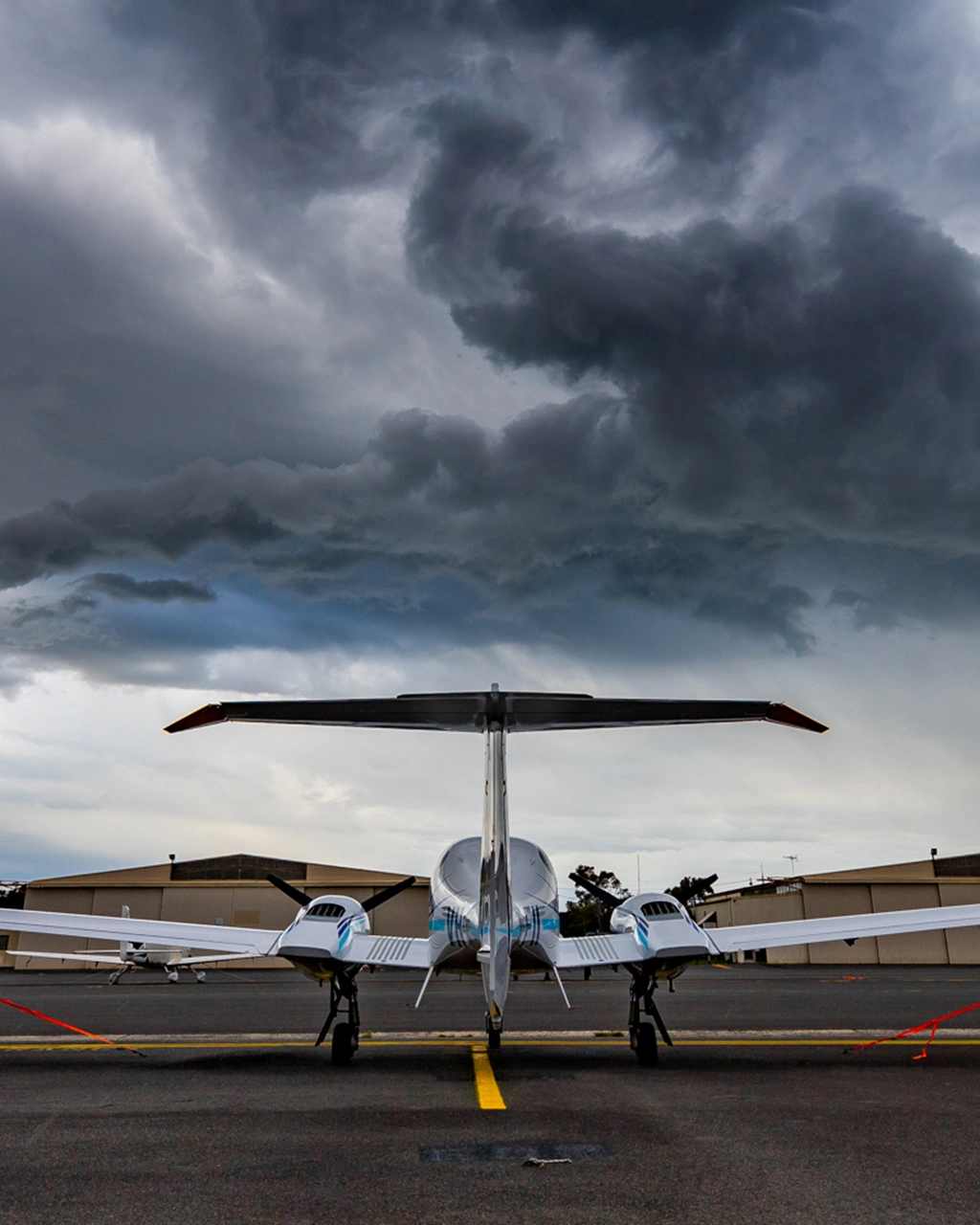
March 25, 2018
Flying In Marginal Weather: A Student Pilot Experience
Flying in marginal weather with an experienced instructor is a great way to gain experience and build confidence. As an aviation student, you will regularly be placed in unfamiliar situations that test your skill, airmanship and decision making. These judgements could even determine the entire outcome of a flight. It is paramount for all pilots to attain a weather briefing for all matters of flying, including flying circuits.
The 24th of September, 2017, was a definitive learning curb and monumental day for me in my aviation career. What was supposed to be a regular day of circuit flying soon turned into an unforeseen challenge.
The weather was marginal on that day, with gusts up to 20 knots and some showers, as the outer rainbands of a tropical depression were affecting us here in Hong Kong. However, it seemed safe enough to fly circuits at first glance.
Fly with an instructor who is comfortable with flying in marginal weather
This will allow you to test your limitations safely.
After pre-flight, I immediately requested not to be sent out solo due to the weather. Nevertheless, my instructor and I decided that today would be a wonderful opportunity to test my abilities safely under his supervision.
My instructor was comfortable with the conditions; however, we were both aware of a squall line brewing to the south of Hong Kong that could potentially affect us. We calculated that we had at least 45 minutes before the line hit, and we assumed we would be in the clear.
Think beyond the aviation weather briefing
Interpreting the weather does not stop there. It’s vital that you can visualise how the forecast can potentially affect your flight.
Heels to the floor, full power, RPMs in range, Ts and Ps in the green and as the aircraft passed 55 knots; I gently applied backpressure for a smooth take-off.
Almost as soon as I climbed above the tree-lines, the aircraft jolted to the right, and I corrected instinctively. I remembered exactly how to respond during turbulence – focus on holding the altitude of the plane, don’t chase the altitude and most importantly don’t bust manoeuvring speed.
As I rolled out on downwind, the aircraft was thrown around in all directions. My body, with the absence of double shoulder harnesses, was also thrown around alongside as the rain and turbulence worsened. I struggled but managed to get my pre-landing checks complete and radio call out. Despite my headset bumping the ceiling, in such turbulence, one must remember that the priority is always to fly the aircraft.
Fly the attitudes. It will save your life one day!
The final approach was terrible, the turbulence made me delay my full flaps selection and I felt as if the aircraft was being tossed around. It occurred to me that I was way too flat as I flared so I applied more back pressure to establish a landing attitude. Even so, it turns out that I was way too fast. I hit and bounced, holding the landing attitude before touching down once again. The conditions weren’t easing, and I really began to worry.
The rain and turbulence escalated and my headset fell off. The instructor took over as I tried to collect myself. It appeared the squall line on the radar image I saw before the flight was going to hit. I voiced to my instructor and knew that this was going to be a full stop.
Plan for unforeseen delays. Anything can close the runway
Prepared and eager to land, I rolled out on downwind, least expecting flight operations to declare a runway closure for 5 minutes over the radio.
The rain became menacing as I flew at circuit height and held, pelting onto the windshield, and obscuring my visibility. My instructor, however, remained silent to test my decision-making skills for flying in marginal weather.
Waiting for the all-clear seemed like forever. Panic began to set in as I came too close to losing control. “Don’t chase the instruments and hold the attitude,” I reminded myself.
“The runway is now all clear”
Thank goodness. My instructor sprang into action and decided to help me with radios. On the base leg, I set the appropriate attitude for 75 knots and trimmed—I feel very fortunate to be taught how to fly attitudes instead of chasing airspeed, the emphasis on attitude flying by Learn to Fly helped immensely.
Just as I was about to turn final, 75 knots plummeted to only 65 and I sank like a rock. I just had a wind shear of a 10-knot loss. Immediately I applied full power and performed a go-around.
On final approach, I focused on just flying by feel. The landing was hard; however, being back on the ground was all that mattered.
“A superior pilot uses his superior judgement to avoid situations which require the use of his superior skill” – Frank Borman, NASA Astronaut, Commander of Apollo 8
Fifteen minutes after landing, the squall line came through with heavy thunder and rain. It was at this moment I realised the outcome of today’s flight was merely a testament to my good judgement under pressure in a difficult situation. My instructor and I were both safe after I made the decision to call it off. It reiterated to me that as a student, we have the right to make a no-go decision! Because despite embracing every ounce of optimism, even for the simplest of tasks, it won’t change the weather outcome.
This flying in marginal weather experience strengthened my decision-making skills and confidence as a pilot. Contributed by LTF student Horace Ho.

For information on our flying courses, email [email protected]/en or go to https://drift.me/learntofly/meeting to book a meeting and school tour. You can also get more handy flying tips by clicking below and subscribing to our YouTube channel!









